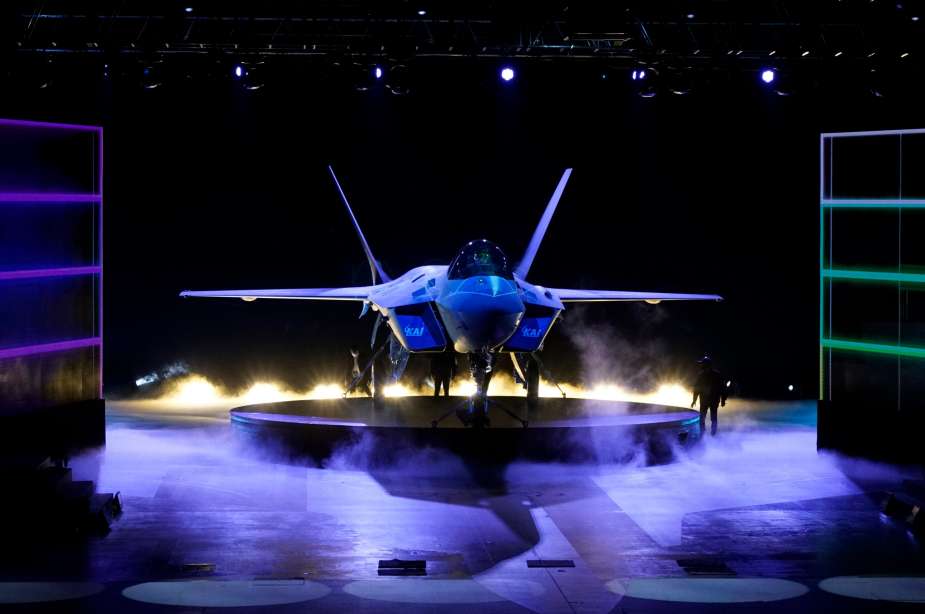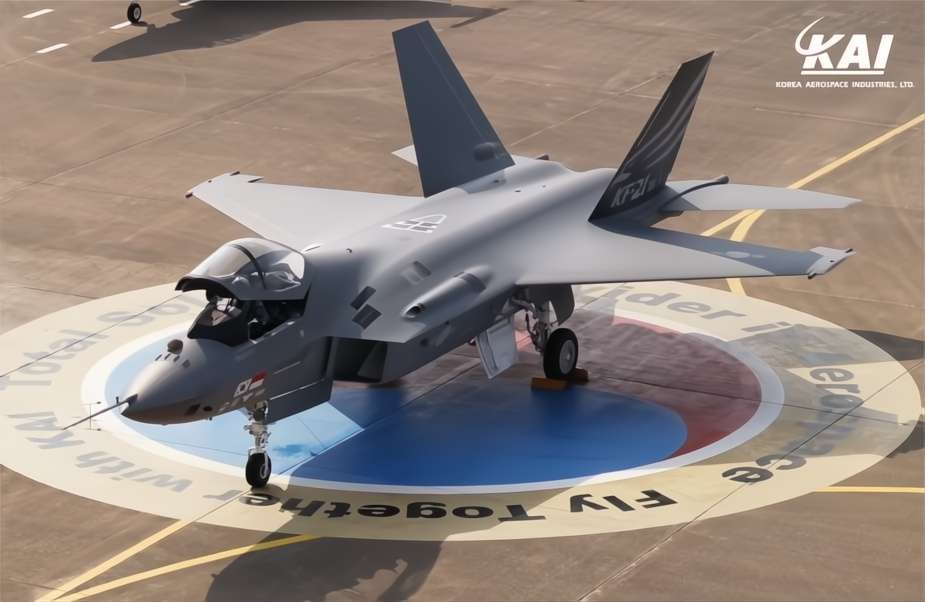According to ChosunBiz on March 24, 2024, the South Korean Defense Acquisition Program Administration (DAPA) will oversee the production of 20 KF-21 Boramae fighter jets by June 2024. Subsequently, after completing air-to-air weapons verification tests, a contract for an additional 20 units is expected to be signed early next year, with delivery of a total of 120 units anticipated by 2032.
Follow Army Recognition on Google News at this link

The original plan for the production schedule of South Korea's first domestically produced supersonic fighter, the KF-21 Boramae, involved the mass production of 40 units by 2024. (Picture source: DAPA)
The original plan for the production schedule of South Korea's first domestically produced supersonic fighter, the KF-21 Boramae, involved the mass production of 40 units by 2024. However, adjustments were made following recommendations from a business feasibility study conducted by the Korea Institute for Defense Analyses (KIDA). Based on KIDA's findings, the number was reduced to 20 units to allow more time for thorough testing and verification of the aircraft's integrated systems.
The decision to decrease the initial production batch from 40 to 20 units followed KIDA's suggestion that the air-to-air missile and Advanced Electronically Scanned Array (AESA) radar integration tests were incomplete. This has led to concerns about potential gaps in the country's air defense capabilities due to the phased-out F-4 and F-5 series fighters and the delayed deployment of the KF-21. According to the new plan, these 20 units are to be produced by June of this year, with the contract for an additional 20 units expected to be signed early next year after successful air-to-air weapons verification tests.
Moreover, there are financial concerns associated with the production reduction. The per-unit cost, initially estimated at around 80 billion won ($59,621,888), could increase to over 100 billion won ($74,527,360) if production is halved. This increase may affect the project's financial viability and its global market competitiveness.
In response, DAPA, along with Korea Aerospace Industries (KAI) and other partners such as LIG Nex1 and Hanwha Systems, is addressing the potential risks to ensure that the KF-21 project progresses without significant delays or cost overruns. The collective goal is to ensure the timely deployment of the KF-21 while managing the financial implications of the revised production schedule.
Despite the reduction in the initial number of units, DAPA maintains that the overall objective to deliver a total of 40 mass-produced units to the Air Force by 2028 remains unchanged. The administration has outlined a schedule for deploying these aircraft from 2026 to 2028. Furthermore, DAPA plans to produce an additional 80 KF-21 units by 2032, expecting to deliver 120 aircraft to the South Korean Air Force. A budget of 7.92 trillion won ($5,902,566,912) has been allocated to support the production of the initial 40 units, covering costs related to the aircraft, its armaments, and necessary logistical and support infrastructure.

The KF-21 can be armed with a broad array of weaponry, including a 20 mm M61A2 Vulcan rotary autocannon, air-to-air and air-to-surface missiles, precision-guided bombs, and anti-ship missiles. (Picture source: KAI)
The development of the KF-21 Boramae is a critical focus for South Korea, aimed at enhancing the air defense capabilities of both South Korea and Indonesia. Over 140 test flights have been conducted to date to evaluate the aircraft's operational stability and avionics system functionality. This testing is essential as DAPA moves toward mass production, assessing the aircraft's combat suitability and conducting necessary feasibility studies to ensure the KF-21's deployment readiness.
A significant development phase for the KF-21 involves its integration with the Meteor beyond-visual-range air-to-air missile (BVRAAM), marking it as the first non-Western platform to use this missile type. The integration is pivotal for the project and includes scheduled live-fire tests in early 2024 to validate the aircraft's combat capabilities and the effective integration of the Meteor missile, thereby enhancing the KF-21's air-to-air engagement potential.
The aircraft's design focuses on a low observable airframe and incorporates advanced avionic systems to surpass fourth-generation fighter capabilities while laying the groundwork for future enhancements such as internal weapon bays. These systems include an Active Electronically Scanned Array (AESA) radar, an Electro-Optical Targeting Pod (EO TGP), an Infrared Search and Track (IRST) system, and an Electronic Warfare (EW) suite. The design aims to improve the aircraft's performance over fourth-generation fighters, with future development stages to include internal weapon bays.
In terms of performance, the South Korean KF-21 Boramae fighter jet is equipped with two General Electric F414-GE-400K turbofan engines, enabling a maximum speed of 2,200 km/h (1,400 mph) and a combat range of 1,000 km (620 mi). Additionally, the aircraft can be armed with a broad array of weaponry, including a 20 mm M61A2 Vulcan rotary autocannon and various hardpoints for carrying air-to-air and air-to-surface missiles, precision-guided bombs, and anti-ship missiles.
















